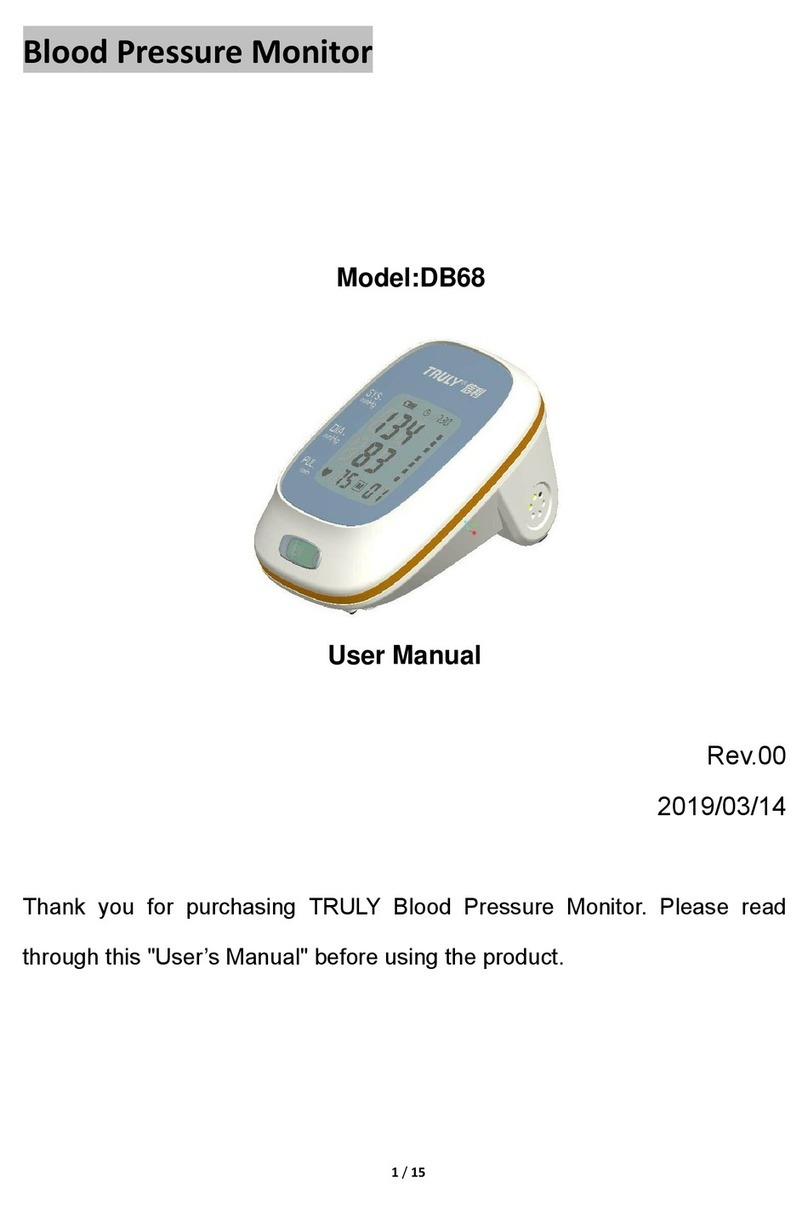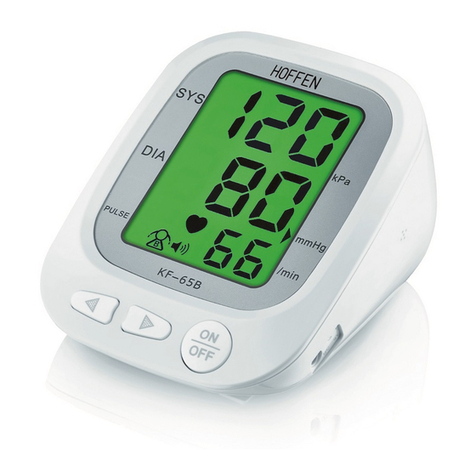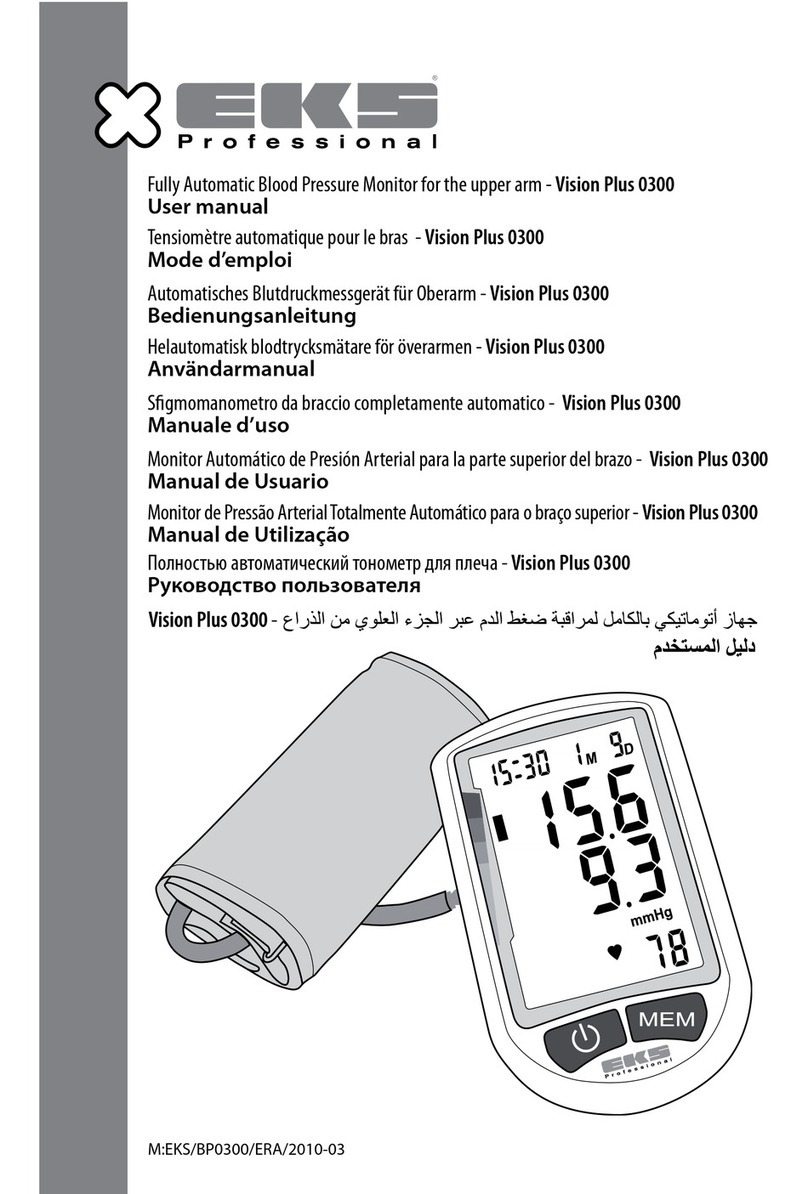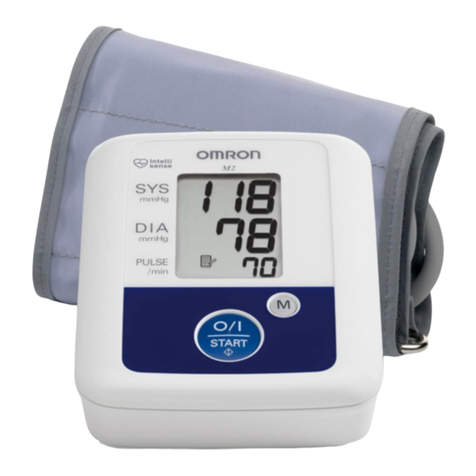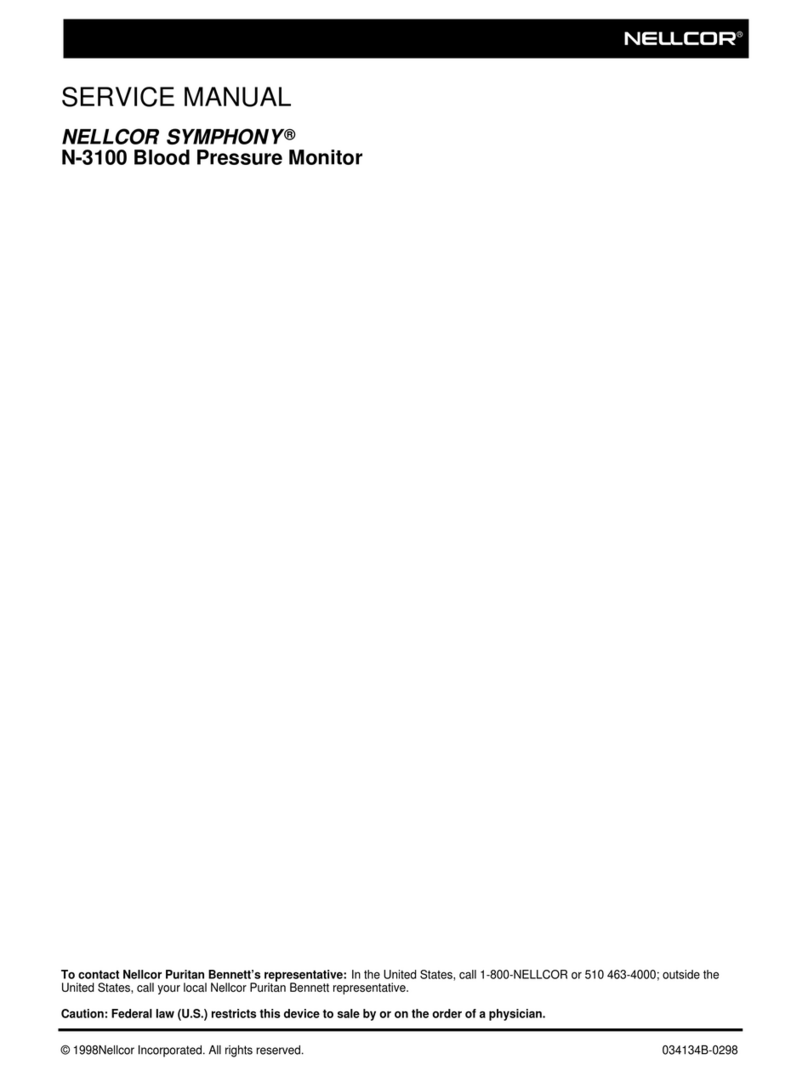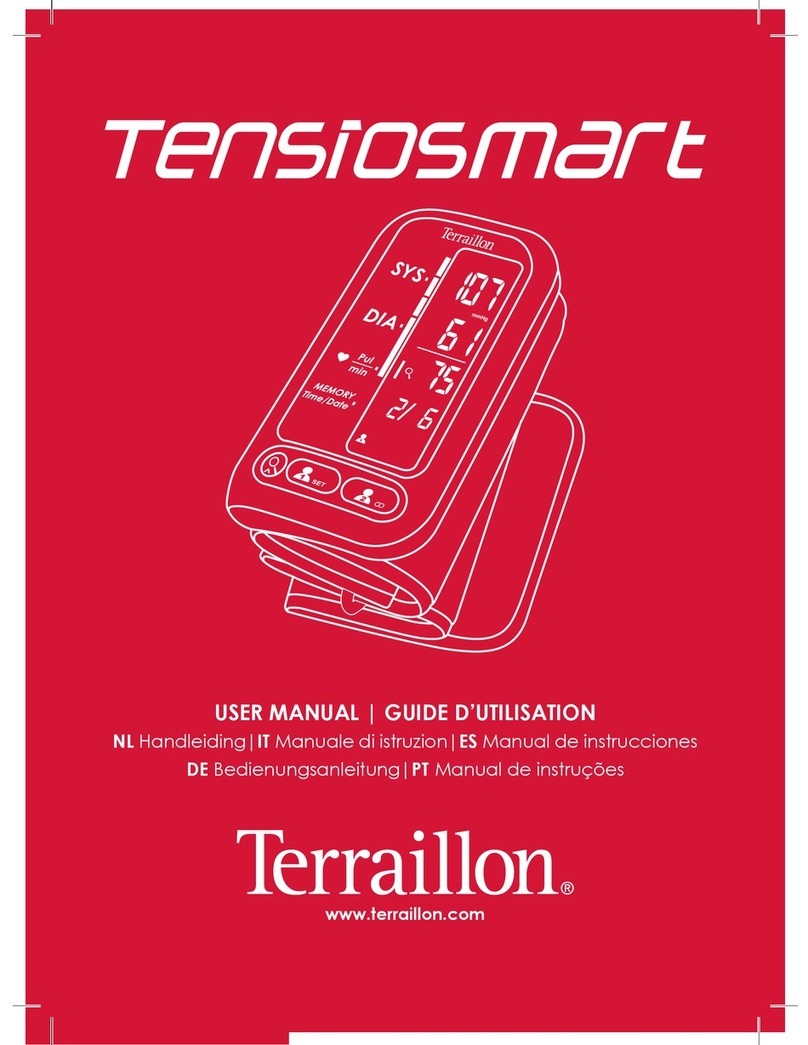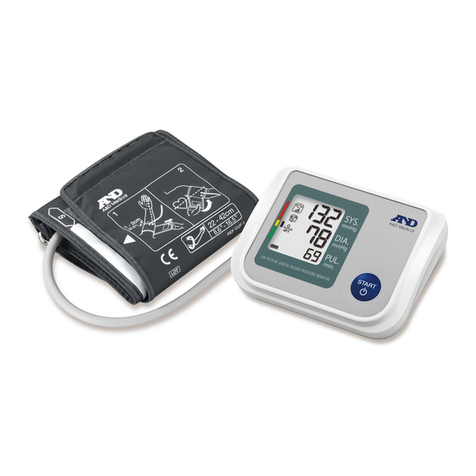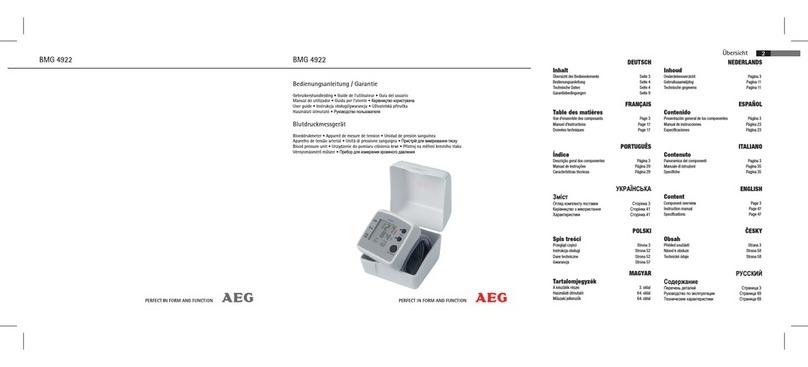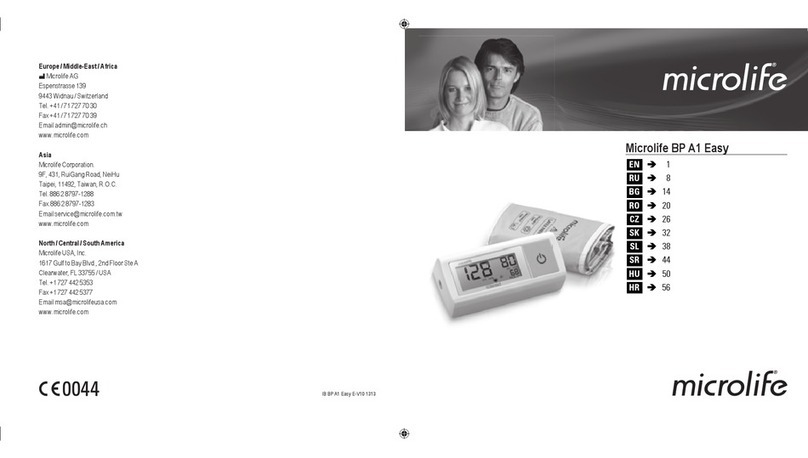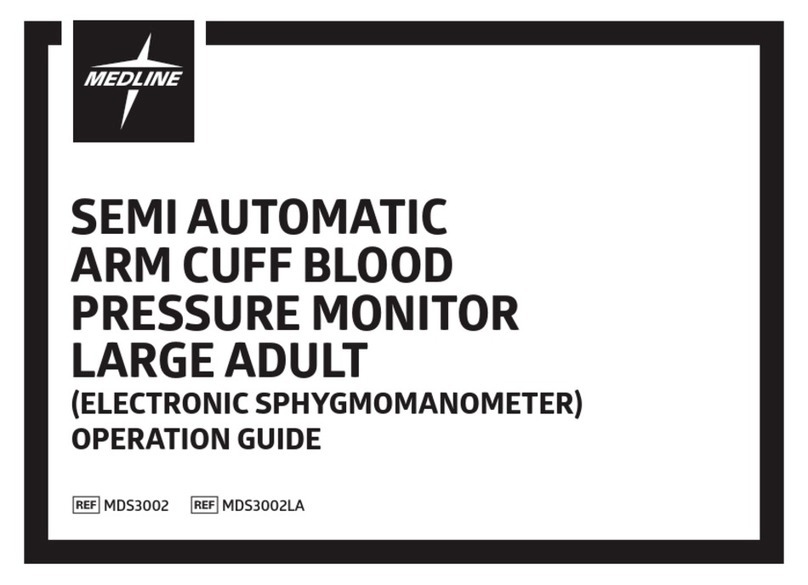
Step 1 – Unpacking the Tango M2
Make sure you have all the proper components. Refer to the
packing label on the inner box tray for the list of components
you received based upon your order.
Connect the Power Supply to a Power Cable, and plug into an
AC power outlet. Connect the Power Supply to the DC input
connector on the back of the monitor.
Use the ON/OFF (1) button on the back of the monitor to
turn it on. The blue LED (2) on the top of Tango M2 will be lit
whenever the monitor is powered on.
Step 3 – Placing and Connecting the Cuff
Use either a SunTech Orbit-K™ blood pressure cuff or a SunTech Single Patient Use kit (containing a disposable blood pressure cuff and microphone pad). This section gives directions for proper size selection and placement of either style of cuff. It is important that the cuff
is properly fitted to the patient’s arm, and that the microphone is placed over the brachial artery (between the bicep and tricep)! Improper cuff sizing and a misplaced microphone can lead to missed or poor readings and accuracy.
Orbit-K Cuff
a. Locate the brachial artery on the left arm.
b. Slide the cuff sleeve up the patient’s arm, with the “ARTERY” marker pointing down the arm.
c. There is a microphone located under the “ARTERY” marker. Make sure the microphone is placed on the
inner portion of the arm, directly over the brachial artery between the bicep & tricep. There should be about
3 to 5 cm (two finger widths) between the edge of the cuff and the elbow.
d. Insert the 3-pin microphone connector from the cuff into the corresponding connector on the Patient Cable.
The connector can be inserted in any orientation.
e. Connect the tube from the cuff into the corresponding connector on the Patient Cable and twist.
f. Wrap the cuff around the arm and secure. Use the wrist straps to secure the cables to the patient’s wrist.
Step 2 – Connecting the Stress System
Connect your stress system using the BNC external ECG cable
and RS-232 or USB cable.
To connect your stress system, visit www.SunTechMed.com and
choose: Support > Customer Technical Support > Download
Library > Stress BP Monitors > Tango M2 >Interface Notes for
a list of available Interface Notes.
You may also reference the Tango M2’s E-Library, choose: Main
Menu > Monitor Setup > E-Library > Interface Notes for a list
of available Interface Notes.
Step 4 – Taking a Measurement
Tango M2 requires an ECG signal to take BP measurements
and must be set to DKA Mode while the patient is exercising.
Once the test begins, the stress system will prompt the monitor
to take BP readings. The cuff will automatically inflate for each
measurement. The message “RELAX ARM BP in progress” will
be displayed until the measurement is complete; the reading
will then be displayed. You can also press the START/STOP
button to manually prompt the monitor to take BP readings.
This same button can be used to abort a reading if necessary.
Step 5 – Downloading Data
1. Insert the USB-A key into the Tango M2 (1).
2. Use the Arrows and Select Keys to navigate to the Main
Menu > Measurement Table > press the Select Key.
3. Navigate to the Download Data selection and press the Select
Key.
4. A message will come up saying Download in Progress, when
this is complete press the Select Key to Exit. You may now
remove the USB-A Key.
5. Connect your USB-A Key to your PC. When the window
opens there will be a file called Results. Open this file.
6. Inside the file there will
be a document that needs
to be identified. It will start
with the year followed by
the month and date and
other identifiers; set up like
YYYYMMDD########.
This is the unique identifier
for each new BP data set that
is pulled off the Tango M2.
For further detailed instruc-
tions please see User Manual
for details.
a. b. c. d. e. f. a. b. c. d. e. f.
First Time Setup & Operation
a. Locate the brachial artery on the left arm.
b. Place the microphone onto the microphone pad. Peel the protective film from the microphone pad.
Note: the single patient use kit uses the microphone from the Orbit-K cuff.
c. Place the microphone on the patient’s arm making sure that the microphone is placed on the medial part of
the arm, directly over the brachial artery between the bicep and tricep. There should be about 3 to 5 cm (two
finger widths) between the microphone pad and the elbow.
d. Wrap the cuff around the arm and secure.
e. Insert the 3-pin microphone connector from the cuff into the corresponding connector on the Patient Cable.
The connectors can be inserted in any orientation. Connect the tube from the cuff into the corresponding
connector on the Patient Cable and twist.
f. Use the wrist straps to secure the cables to the patient’s wrist.
Single Patient Use Kit
(1) (2) (1)












